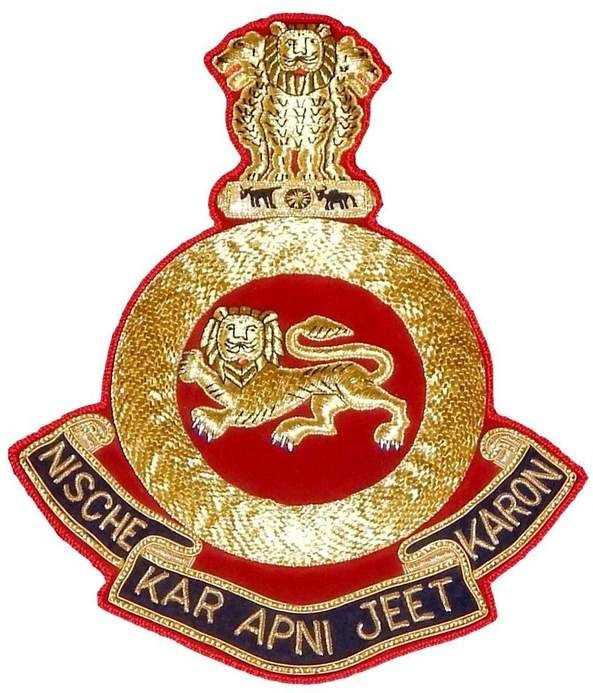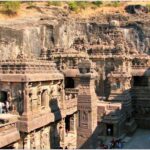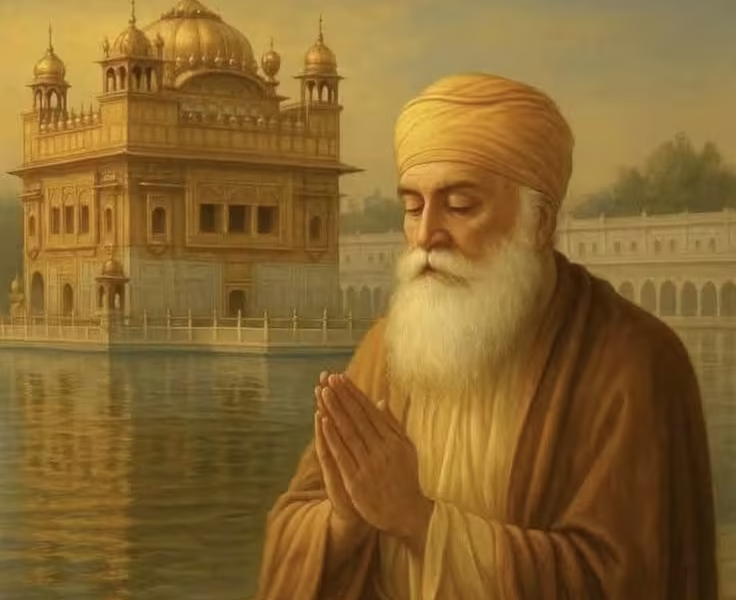The Sikh Regiment in the Indian Army is famous for being the highest decorated in the Indian Army. With a rich history and an exceptional track record of bravery and valor, the Sikh Regiment has earned numerous accolades and honors.
The regiment’s journey began in the late 19th century when Sikhs, known for their martial traditions, were recruited into the British Indian Army. Since then, the Sikh Regiment has played a significant role in various conflicts and wars, both within India and abroad.
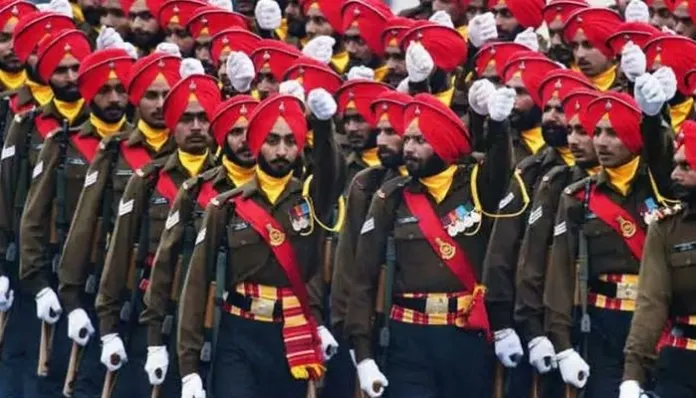
During the British time period, the British recognized the military skill of the Sikhs and their long history of fighting as warriors. The Sikhs had a reputation for their fearlessness, discipline, and excellent fighting skills. Seeing the potential of the Sikh community in military operations, the British began recruiting Sikhs into their forces.
The Sikh Regiment was established in 1846 after the Anglo-Sikh Wars. The regiment was given name 52nd Sikh Infantry and later renamed the 14th Punjab Regiment. The primary purpose of forming this regiment was to utilize the skills and strengths of the Sikhs in the British military.
The Sikhs were known for their individual appearance, with their turbans and beards, which reflected their religious beliefs and identity. The British recognized the importance of preserving these cultural and religious aspects while merging the Sikhs into the military. This led to the formation of the Sikh Regiment, where Sikh soldiers were allowed to maintain their religious practices and wear their traditional attire.
The Sikh Regiment played a significant role in various conflicts and wars, including World Wars I and II.
One of the most memorable achievements of the Sikh Regiment was during World War I, when they fought in different battles in Europe, Africa, and the Middle East. Their courage and determination were clearly seen in battles like Neuve Chapelle, Ypres, and Gallipoli, where they displayed extraordinary bravery under challenging conditions.
During World War II, the Sikh Regiment continued to prove their bravery. They fought in key battles such as El Alamein, Monte Cassino, and the Burma Campaign. Their commitment and resilience were helpful in achieving victory in these crucial battles.
In addition to their contributions during major fights, the Sikh Regiment has also been actively involved in maintaining peace and security within India. They have participated in various terrorists operations in Jammu sector and other areas of India and in peace keeping missions both within the country and abroad.
The bravery and valor of the Sikh Regiment have not gone unnoticed. The regiment has been awarded different prestigious honors, like 73 Battle Honours, 15 Theatre Honours, and other various gallantry awards such as the Param Vir Chakra, Maha Vir Chakra, and Vir Chakra.
Even after India gained independence from British rule, the Sikh Regiment remained an integral part of the Indian Army. Today, it continues to be one of the most respected and revered regiments in the Indian military.
The formation of Sikh regiment changed into a reaction to the popularity of the martial qualities, bravery, and loyalty displayed by using the Sikh network in various army campaigns.
Table of Contents
ToggleAnglo-Sikh Wars (1845–1849):
The Anglo-Sikh Wars were a series of conflicts fought between the Sikh Empire and the British East India Company. The Sikhs, known for their martial history and strong military capabilities, put up a strong force against the British forces. The wars were triggered by tensions between the Sikh Empire and the British, who were looking to expand their control over India.
The Sikhs, under the leadership of Maharaja Ranjit Singh, had established a powerful and prosperous empire in Punjab. However, after Singh’s death in 1839, the empire start to weaken and face internal conflicts. The British saw this as an opportunity to expand their influence in the region.
The First Anglo-Sikh War took place from 1845 to 1846. The Sikhs initially achieved some success in the early battles, but they were eventually defeated by the well-trained and well-equipped British forces. The agreement of Lahore was signed, which resulted in the surrender of the Jalandhar Doaba and other territories to the British.
The Second Anglo-Sikh War occurred in 1848-1849. This time, the Sikhs put up a aggressive nature, and the British faced significant challenges in defeating them. However, with better military force, weapon system and reinforcements, the British ultimately gained victory. The Sikh Empire was split up, and Punjab was taken over by the British East India Company.
The Anglo-Sikh Wars had a great impact on the region. The Sikh Empire, which had been a major power in northern India, was brought under British control. The wars also highlighted the military skills of the Sikhs and their determination to defend their homeland.
Today, the Anglo-Sikh Wars are remembered as a symbol of Sikh bravery and resilience. The conflicts played a role in shaping the history of Punjab and India as a whole. The effect of the wars continues to be honored by the Sikh community, who remember those who fought and sacrificed their lives for their homeland.
The British, impressed with the aid of the braveness and abilities of Sikh infantrymen, specifically at some point of the battles of Ferozeshah, Chillianwala, and Gujrat, recognized the ability of having devoted Sikh gadgets of their army.
Formation of the First Sikh Battalion (1846):
The formation of the First Sikh Battalion August 1, 1846 was a result of the British East India Company’s recognition of the bravery and skills displayed by Sikh soldiers during the Anglo-Sikh Wars. The British saw the potential and loyalty of the Sikhs and decided to form a dedicated battalion comprising Sikh soldiers.
Contribution at some point of British Campaigns:
The Sikh Regiment, with its one of a kind look, with the turban and beard, became an essential part of the British Indian Army. Sikh soldiers participated in various campaigns and battles, consist of those at the North-West Frontier and in one of a kind elements of the British Empire.
The regiment’s contribution at some point of World War I in addition solidified its recognition for bravery and field.
Post-Independence Continuity:
The Sikh Regiment has a long and storied history, and this continued even after India gained independence in 1947. With the country conversion into a newly shaped Indian Army, the Sikh Regiment orderly integrated into its ranks. The regiment’s legacy persevered as it actively participated in the defense of the newly independent country during various conflicts.
The Sikh Regiment’s dedication to duty and bravery was evident in its involvement in various wars and conflicts. From the Indo-Pakistani War of 1947-48 to the wars with China in 1962 and 1967, the regiment played a key role in defending India’s borders. Its soldiers displayed immense valor and sacrifice, earning numerous gallantry awards and accolades.
Not only did the Sikh Regiment excel in fights or wars, it also made significant contributions to peace keeping missions around the world. The regiment has served in United Nations peace keeping operations in countries like Congo, Sudan, and Lebanon. This regiment soldiers have demonstrated professionalism, discipline, and commitment to maintain peace and stability in these war-torn regions.
Also, beyond their military duties, the Sikh Regiment has also been actively involved in community service and nation-building activities. Their commitment to social welfare projects, education initiatives, and disaster relief efforts has made a positive impact on society.
One of A Kind Ethos and Identity:
The Sikh Regiment has a unique character which is deeply rooted in both tradition and culture of the Sikhs.
This is a quality inherent not only in the regiment, but also the life of a true Sikh. Sikh soldiers, with their distinctive turbans and beards easily recognizable as one and the same, carry forward the heritage of their fathers who fought bravely–not only for themselves but also all villages around them. The regiment’s spirit is one of discipline, honor and brotherhood, binding together into a single entity the tough and hard-boiled talents which each unit idea members contribute.
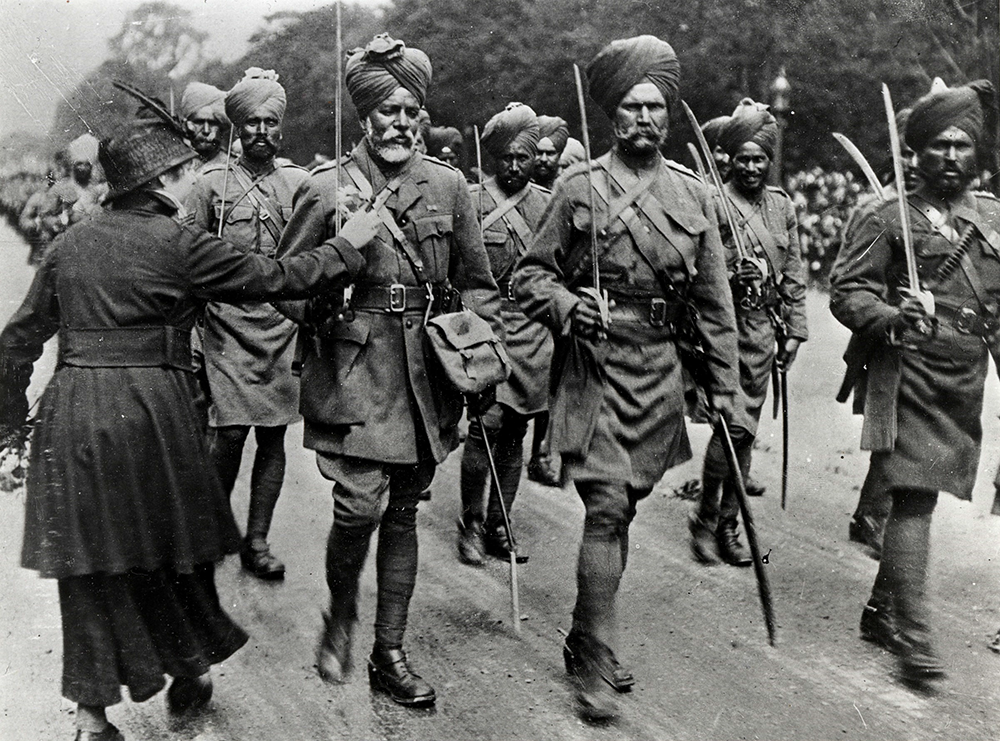
Deg Teg Fateh
This motto is the core value that guides the Sikh Regiment both in peace time and at war.
“Deg” refers to the welfare or well-being of society. In this respect it can be seen as representative of the regiment’s character during times when there is no threat to its very existence. It is committed whole heatedly to contributing towards bettering one’s lot.
“Teg” means the sword, and shows just how prepared for battle the regiment is (while still with an eye intent on victory). This motto marks out that the regiment has two functions:
Guardians who maintain peace without any disturbance keeping peace within the borders of India just as well as formidable fighting forces when needs arise to stand and defend our nation both on land or sea.
The Sikh Regiment Centre at Ramgarh:
Overview of Ramgarh because the Hub for Training Sikh Regiment Recruits:
Ramgarh has become known as a prominent hub for training Sikh Regiment recruits. The town, located in the Indian state of Jharkhand, has a rich history and cultural significance for the Sikh community. The Ramgarh Military Station, established in 1941, serves as a premier training center for the Sikh Regiment, one of the oldest and most distinguished regiments in the Indian Army.
The training facilities in Ramgarh are state-of-the-art, providing recruits with comprehensive training in various aspects of military life. The recruits undergo strict physical training, combat drills, and weapons handling exercises to prepare them for the challenges they may face in the field. They are also taught discipline, teamwork, and leadership skills, which are essential for a successful military career.
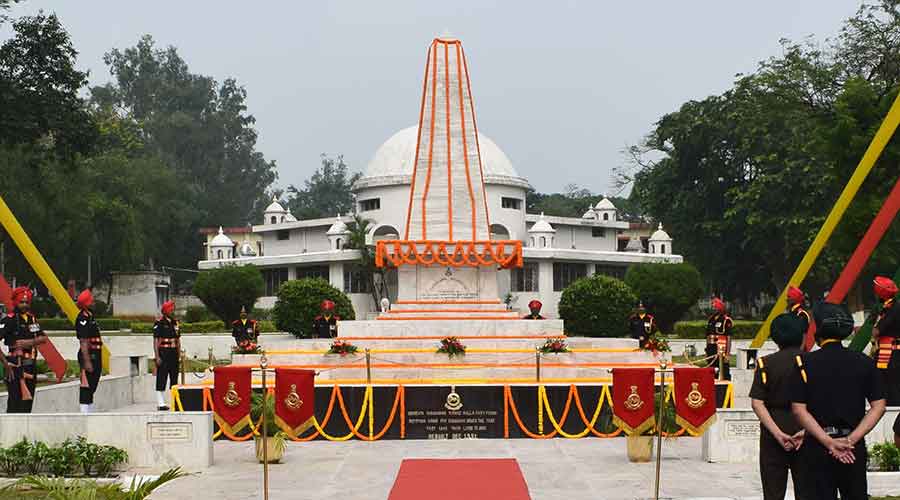
Historical Context of Ramgarh’s Association with the Regiment:
The importance of Ramgarh as a training center for Sikh Regiment recruits cannot be overstated. The town has a deep connection to Sikhism and its traditions. The Sikh Gurdwara in Ramgarh is a holy place for Sikhs, attracting pilgrims from all over India. The presence of this religious site adds to the spiritual significance of the training center and reinforces the recruits’ sense of identity and purpose.
Also, Ramgarh area, having a conducive environment for training activities. Its geographical location provides access to diverse terrains, ranging from dense forests to hilly terrains, allowing recruits to gain practical experience in different military scenarios. The climate of the region also presents challenges that help develop resilience and adaptability among the recruits.
In addition to its role as a training center, Ramgarh is also a energetic town that welcomes visitors from all walks of life. The local community accept the presence of the military and actively supports their activities. This support help a sense of camaraderie between the soldiers and the local population, creating a harmonious environment for training.
Overall, Ramgarh’s status as the hub for training Sikh Regiment recruits is a testament to its historical and cultural significance. The town’s commitment to providing top-notch training facilities and the support of the local community ensures that the recruits receive the best possible preparation for their military careers.
Ramgarh’s association with the Sikh Regiment dates back to the colonial era, when it served as a cantonment for British forces. Over the years, it advanced right into a key schooling center for diverse regiments, with the Sikh Regiment finding a prominent region. The historical significance of Ramgarh lies in its non-stop position as a education hub, in which generations of Sikh soldiers had been molded into disciplined and professional warriors.
Comprehensive Training Modules for Recruits:
The Sikh Regimental Centre at Ramgarh is dedicated to providing comprehensive education modules that aim to shape recruits into disciplined and talented soldiers. The training offered at the center covers different aspects like physical fitness, weapon proficiency, tactical skills, and in the mind regimental values.
One of the key focuses of the training is on physical fitness. Recruits undergo rigorous physical training programs that include exercises, drills, and sports activities. This helps them develop strength, endurance, and agility, which are essential for soldiers in the field.
Weapon proficiency is another key aspect of the training. Recruits are trained in handling a wide range of weapons, including rifles, machine guns, and grenades. They learn proper techniques for aiming, shooting, and maintaining their weapons. This ensures that they are equipped with the necessary skills to effectively engage in war kind of situations.
Tactical skills are also emphasized during the training. Recruits learn how to navigate different terrains, employ various tactics, and work as a team. They are trained to analyze situations, make quick decisions, and adapt to changing circumstances. These skills are essential for soldiers to effectively carry out their duties and accomplish missions.
In addition to physical and tactical training, the Sikh Regimental Centre at Ramgarh also focuses on instilling regimental values in the recruits. Discipline, integrity, loyalty, and respect are among the core values that are emphasized throughout the training. The goal is to shape recruits into not just skilled soldiers but also individuals who have these values and uphold the traditions of the regiment.
Overall, the education modules provided at the Sikh Regimental Centre at Ramgarh play a key role in preparing recruits for their roles as soldiers. The training contain the necessary physical and mental skills, as well as instills in them the core values that are essential for serving in the regiment.
State-of-the-Art Facilities for Skill Development:
At Ramgarh, State-of-the-art facilities for skill development are necessary for providing individuals with the tools and resources they need to thrive in today’s fast-paced and competitive world. These facilities offer the latest technology and equipment, creating an environment that promotes innovation, creativity, and collaboration.
One main aspect of state-of-the-art skill development facilities is access to cutting-edge technology. This can include advanced computer labs, high-speed internet connections, and state-of-the-art software and hardware. These resources allow individuals to learn and practice skills that are in high demand in industries such as information technology, design, and engineering. By providing access to the latest technology, these facilities ensure that individuals are prepared to meet the demands of the modern workplace.
A detailed account of the 19th Infantry under the Sikh Regiment:
The Sikh Regiment consists of 19 infantry battalions, each with a unique history, tradition and contribution to the Indian Army. This regiment is designated by a numerical designation. A detailed account of this regiment is necessary to understand the activities and experiences that together make up the strength of the Sikh Army.
1st Sikh Battalion:
The 1st Sikh Battalion holds a significant place in history. Formed during World War I, the battalion was made up of Sikh soldiers who served under the British Indian Army. The battalion played a crucial role in various military campaigns, including the Battle of Neuve-Chapelle, the Battle of Gallipoli, and the Battle of Givenchy.
2nd Sikh Battalion:
The 2nd Sikh Battalion is a historic military unit that played a significant role in various conflicts throughout history. Formed in the early 19th century, the battalion consisted primarily of Sikh soldiers who were known for their bravery, loyalty, and martial skills.
The 2nd Sikh Battalion saw action in several major conflicts, including the Sepoy Mutiny of 1857 and both World Wars. During these conflicts, the battalion distinguished itself through its courage and discipline, earning numerous accolades and commendations.
One notable event in the history of the 2nd Sikh Battalion was its participation in the Battle of Saragarhi in 1897. In this battle, 21 soldiers from the battalion defended a strategic outpost against a force of over 10,000 Pashtun tribesmen. Despite being vastly outnumbered, the Sikh soldiers fought valiantly, holding off the enemy until reinforcements arrived. This act of bravery is still celebrated today and is considered one of the greatest last stands in military history.

3rd Sikh Battalion:
The 3rd Sikh Battalion holds a significant place in Sikh military history. The battalion was formed during World War I in 1917, and it consisted of soldiers from the Sikh community who volunteered to serve in the British Indian Army. The battalion played a vital role in various military campaigns, including the Mesopotamian campaign and the Palestine campaign.
They fought alongside their fellow soldiers from different communities, showcasing the unity and strength of the Indian Army. Their contributions were recognized with numerous awards and accolades, including the prestigious Victoria Cross.
4th Sikh Battalion:
The 4th Sikh Battalion holds a significant place in Sikh military history. Formed during World War I, the battalion was composed of Sikh soldiers who volunteered to serve in the British Indian Army. The 4th Sikh Battalion saw action in various theaters of war, including the Middle East, Mesopotamia, and Palestine. The battalion’s Sikh soldiers upheld the principles of Sikhism, which emphasize bravery, honor, and selfless service.
The 4th Sikh Battalion played a crucial role in several important battles, including the Battle of Megiddo in 1918, where they helped secure a decisive victory for the Allied forces.
5th Sikh Regiment:
Formed in 1846, it was one of the oldest and most prestigious regiments in the British Indian Army. During World War I, the 5th Sikh Regiment played a crucial role in numerous battles. They fought in the trenches of France and Belgium, displaying exceptional courage and valor. The regiment’s soldiers were known for their unwavering commitment to duty and their ability to withstand the harshest conditions.
In World War II, the 5th Sikh Regiment continued to make significant contributions. They fought in various theaters of the war, including North Africa, Italy, and Burma. The regiment’s soldiers faced formidable challenges, but they never wavered in their determination to defend their country.
6 Sikh Regiment:
The 6 Sikh Regiment is a distinguished regiment of the Indian Army that has a rich history and a proud tradition. It was formed in 1846 and has since served in numerous conflicts and operations, both within India and abroad. It played a significant role in World War I, World War II, the Indo-Pakistani wars, and various counter-insurgency operations.
7th Sikh Regiment:
The regiment was originally formed in 1846 as the 45th Rattray’s Sikhs, named after its first commanding officer, Captain John Augustus Wood Rattray. It was later renamed as the 7th Sikh Regiment in 1901. It fought in the Burma Campaign and played a crucial role in the Battle of Imphal, where it successfully defended against Japanese forces.
8th Sikh Regiment:
One of the most notable accomplishments of the 8th Sikh Regiment was during World War I, where they fought bravely on the Western Front. They were involved in several major battles, including the Battle of Neuve Chapelle and the Battle of La Bassee. The regiment’s soldiers displayed exceptional courage and determination, earning them a reputation as fierce warriors.
During World War II, the 8th Sikh Regiment continued to make significant contributions. They fought in North Africa, Italy, and Burma, displaying their fighting prowess and dedication to their country.
9th Sikh Regiment:
Establishment: Built in the early 20th century. Role in Conflict: Played a key role in theaters of operations, enhancing the Regiment’s assets.
10th Sikh Regiment:
Genesis was raised in the early 20th century. Practical Activities: Contributed to the conduct of peacekeeping missions and conflict zones, demonstrating flexibility and professionalism.
11th Sikh Regiment:
The system was established in the early 20th century. Military Service: Participates in basic military operations, demonstrating resilience and courage.

12th Sikh Regiment:
Set: Raised in the early 20th century. Role in Service: Participates in peacekeeping missions and homeland security operations, demonstrating the versatility of the Corps.
13th Sikh Regiment:
Genesis was raised in the early 20th century. Contributions: Actively participated in post-independence struggles, earning respect for dedicated service.
14th Sikh Regiment :
The system was established in the early 20th century. Versatile roles: Participates in activities ranging from conventional combat to peacekeeping missions.
15 Sikh Regiment:
Set: Raised in the early 20th century. Professional Contributions: Contributed to national security and safety, and is recognized as exceptional service.
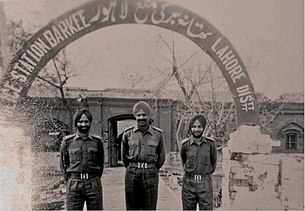
16th Sikh Regiment:
Structure: Built in the early 20th century. Operational Engagement: Actively involved in border security and conflict zones, demonstrating adaptability and professionalism.
17th Sikh Regiment :
Genesis was raised in the early 20th century. Military Campaigns: Participated in major military campaigns, reflecting the regiment’s lasting legacy.
18th Sikh Regiment:
The system was established in the early 20th century. A record of service has contributed to peacekeeping missions and homeland security operations, emphasizing discipline and dedication.
19th Sikh Regiment:
Set: Raised in the early 20th century. Activities: Supported national security and defense furthering the heritage and traditions of the Sikh Army Corps.
Contributions in National Defense:
The Sikh Regiment has a long and storied history of defending India’s borders, particularly in areas of strategic significance such as Jammu and Kashmir. The regiment has been deployed in challenging terrains, showcasing their strength and resilience. Their presence plays a crucial role in border defense, ensuring the safety and security of the nation.
Beyond border security, the regiment has actively contributed to India’s defense in conflicts, drastically at some stage in the Indo-Pak wars of 1947, 1965, and 1971. The Battle of Dograi in 1965 stands as a testament to the Sikh Regiment’s valor and determination. Furthermore, their enormous role inside the Kargil War in 1999 showcased the regiment’s adaptability and professionalism in mountain war, defending essential positions with unwavering resolve.
Instances of the Regiment’s Deployment in Conflict Zones:
The Sikh Regiment is renowned for its remarkable history of deployment in conflict zones, showcasing its unwavering commitment to protecting the nation. Throughout the Indo-Pak wars, the regiment faced a multitude of challenges, ranging from traditional warfare to counter-insurgency operations.
During these conflicts, the Sikh Regiment demonstrated exceptional bravery and valor on the battlefield. Their soldiers exhibited remarkable skills and strategic prowess, allowing them to effectively counter enemy forces and successfully defend their positions. They fought with unwavering determination, even in the face of extreme adversity.
In addition to their achievements in conventional warfare, the Sikh Regiment also played a crucial role in counter-insurgency operations. Their soldiers were trained to operate in challenging terrains and adverse conditions, making them highly effective in combating insurgent groups. They displayed exceptional professionalism and dedication, working tirelessly to restore peace and stability in conflict-ridden areas.
The Sikh Regiment’s commitment to the nation’s defense is deeply rooted in their values and traditions. They draw inspiration from their rich heritage and religious teachings, which emphasize selfless service and protection of others.
One way the Sikh Army maintains its traditions and heritage is through the observance of religious practices. Sikh soldiers are encouraged to participate in daily prayers and engage in spiritual activities, such as reading the Guru Granth Sahib, the holy book of Sikhism. These practices not only strengthen their faith but also reinforce their connection to their cultural roots.
Sikh soldiers participate in various ceremonies that commemorate important events and milestones. These ceremonies often involve wearing traditional attire, performing religious hymns, and displaying martial arts skills. By taking part in these rituals, soldiers are reminded of the sacrifices made by their ancestors and the values they uphold.
The Sikh Army also places great importance on the physical appearance of its soldiers. The distinctive beards and mustaches worn by Sikh soldiers are not merely a fashion statement but a symbol of their commitment to their faith. Soldiers are expected to maintain the appearance of their facial hair and keep it well-groomed. This practice not only showcases their devotion to Sikhism but also serves as a reminder of their identity as members of the Sikh Army.
Festivals and ceremonies at the Sikh Regiment Centre:
Throughout the year, various festivals and ceremonies are held at the center, bringing together the Sikh community and creating a sense of unity and pride.
In addition to festivals, the Sikh Regiment Centre also hosts various ceremonies to honor and recognize the bravery and achievements of its soldiers. One such ceremony is the Passing Out Parade, where new recruits officially graduate from their training and join the regiment. This ceremony is attended by family members, dignitaries, and fellow soldiers, creating a sense of pride and accomplishment.

Annual Meeting Schedule:
The Sikh Army Corps holds annual meeting to honor its history and sacrifices. One important event on their regimental calendar is Martyrs’ Day, which is commemorated each year. This day holds a prominent place in the regiment’s annual program as a way to remember and pay tribute to those who have made great sacrifices in service to the Sikh Army Corps.
The annual meeting also provides an opportunity for the Sikh Army Corps to come together as a community and strengthen their bonds. Members share stories, memories, and experiences. It is a time for reflection, gratitude, and remembrance.
Cultural and religious practices:
There are different cultures and beliefs within the regiment. Baisakhi, also known as Vaisakhi, is a major Sikh festival that commemorates the formation of the Khalsa, the collective body of initiated Sikhs. The Sikh regiment celebrates this festival with great enthusiasm, organizing religious processions, prayers, and feasts. Deepavali, or Diwali, the festival of lights, is another important festival celebrated by the Sikh regiment. It symbolizes the victory of light over darkness and good over evil. During this festival, the regiment lights up their barracks and homes with lamps and candles, participates in fireworks, and shares sweets and gifts with each other. Gur Purab, also known as Guru Nanak’s birthday, is celebrated to honor the birth of Guru Nanak Dev Ji, the founder of Sikhism. The regiment observes this festival by organizing prayers and religious gatherings, where hymns are sung and teachings of Guru Nanak are shared. These festivals not only provide an opportunity for the Sikh regiment to connect with their own religious and cultural heritage but also promote unity and respect for diversity within the regiment.
What is the difference between Indian Army Regiments and Battalion?
In the Indian Army, there are distinct differences between regiments and battalions.
A regiment is a larger organizational unit within the army, made up of multiple battalions. It is typically responsible for a specific role or function, such as infantry, artillery, or armored warfare. Regiments have a long history and often have a strong sense of tradition and identity. They are usually composed of personnel from a particular region, caste, or ethnic group, and may have their own unique uniforms, insignia, and traditions.
On the other hand, a battalion is a smaller unit within a regiment. It is typically composed of several hundred soldiers and is responsible for carrying out specific military operations. A battalion is usually commanded by a lieutenant colonel and consists of several companies or platoons. It is the basic operational unit of the army and is responsible for executing missions on the ground.
How many Sikh regiments are there?
The Indian Army’s Corps of Infantry has only one Sikh Regiment, which is located at Ramgarh. The Sikh Regimental Centre is responsible for training recruits for a total of 19 infantry battalions, as well as three TA (Territorial Army) battalions.
The regiment consists of several battalions, numbered from 2 SIKH to 22 SIKH. But battalions 9 and 15 are not included in the regiment.
1 SIKH Regiment was converted to the Mechanized Infantry Regiment, indicating a change in its role and operational capabilities. This is due to strategic or organizational reasons.
Also, there are Sikh Territorial Army battalions associated with the Sikh Regiment. These include 124 SIKH (TA), 152 SIKH (TA), and 157 SIKH (TA). These territorial army battalions play a crucial role in supporting the regular army units during times of need and contribute to the defense and security of the nation.
What is the difference between the Punjab and Sikh Regiment?
The Punjab regiment is known for its diverse intake of soldiers from the states of Punjab, Himachal Pradesh, and Jammu and Kashmir. This diverse composition brings together individuals from different backgrounds and cultures, having a sense of unity and camaraderie within the regiment. The class composition within the Punjab regiment includes both Sikhs and Non-Sikhs, creating a harmonious environment where individuals from different religious backgrounds work together towards a common goal. This diversity not only enriches the regiment but also allows for a broader understanding and appreciation of different cultures and traditions.
In contrast, the Sikh Regiment exclusively enrolls Sikhs as its soldiers. This regiment holds a significant historical and cultural importance as it represents the Sikh community’s contribution to the armed forces. By enrolling only Sikhs, the Sikh Regiment aims to preserve and uphold the unique traditions, values, and warrior spirit of the Sikh community. This exclusivity creates a strong sense of identity and pride within the regiment, fostering a deep sense of brotherhood among its members.
Can Hindus join Sikh Regiment?
The Sikh Regiment has only Sikhs enrolled. This regiment holds a special significance for the Sikh community, as it allows Sikhs to serve their country while also upholding their religious identity.
Who are the 36 Sikh soldiers?
The 36th Sikhs was a infantry regiment in the British Indian Army with a rich history. Its origins can be traced back to 1887 when it was established as the 36th (Sikh) Bengal Infantry. The regiment consisted of Jat Sikhs and was created under the leadership of Colonel Jim Cooke and Captain H. R. Holmes. The 36th Sikhs were known for their bravery and valor in battle. The regiment’s actions during the Battle of Saragarhi, where 21 soldiers held off an onslaught of over 10,000 Afghan tribesmen, are particularly renowned. Their sacrifice and bravery in this battle have been celebrated and honored.
Who were the 21 Sikh soldiers?
The 21 Sikh soldiers were a group of brave soldiers from the Sikh regiment of the British Indian Army. They played a significant role in the Battle of Saragarhi, which took place on September 12, 1897, in what is now Pakistan. The Battle of Saragarhi was a last stand battle between the Sikh soldiers and an overwhelming force of around 10,000 Afghan tribesmen.
Despite being heavily outnumbered, the 21 Sikh soldiers displayed incredible courage and determination. They fought bravely for several hours, defending their position at the Saragarhi outpost. During the battle, the soldiers displayed exceptional military skills and resilience, repelling wave after wave of enemy attacks.
Unfortunately, all 21 Sikh soldiers eventually lost their lives in the battle. However, their heroic stand became an inspiration for generations to come. The Battle of Saragarhi is remembered as one of the greatest last stands in military history and the soldiers are honored as heroes in India and around the world.
Where is Saragarhi?
Saragarhi was made famous by the Battle of Saragarhi, which took place on September 12, 1897. During this battle, 21 soldiers of the British Indian Army’s 36th Sikh Regiment bravely defended a small outpost against an onslaught of thousands of Afghan tribesmen. Despite being heavily outnumbered, the Sikh soldiers fought valiantly and held their ground until the very end. They were eventually overwhelmed and killed, but their heroism and sacrifice became legendary.
Today, Saragarhi is remembered as a place of great historical significance. The site of the battle has been preserved, and a memorial has been built to honor the brave soldiers who fought there. The memorial serves as a reminder of the courage and sacrifice displayed by the soldiers of the 36th Sikh Regiment.
